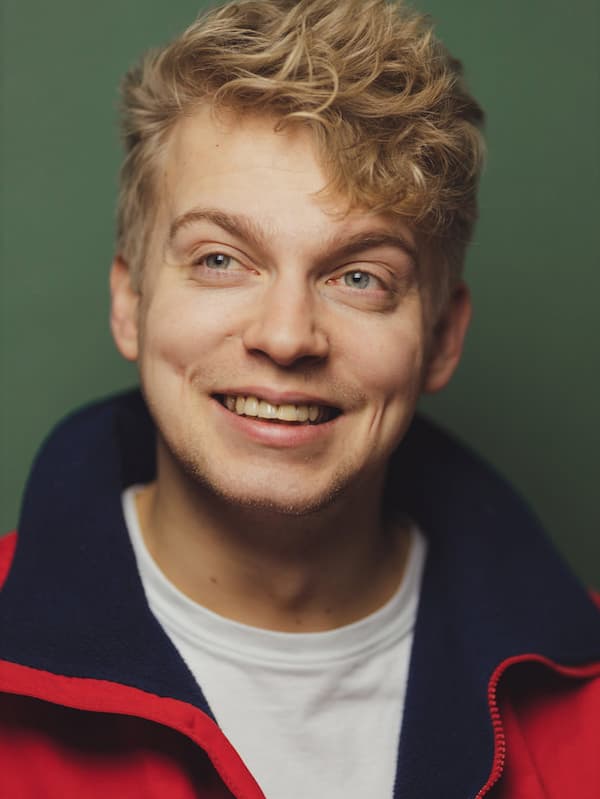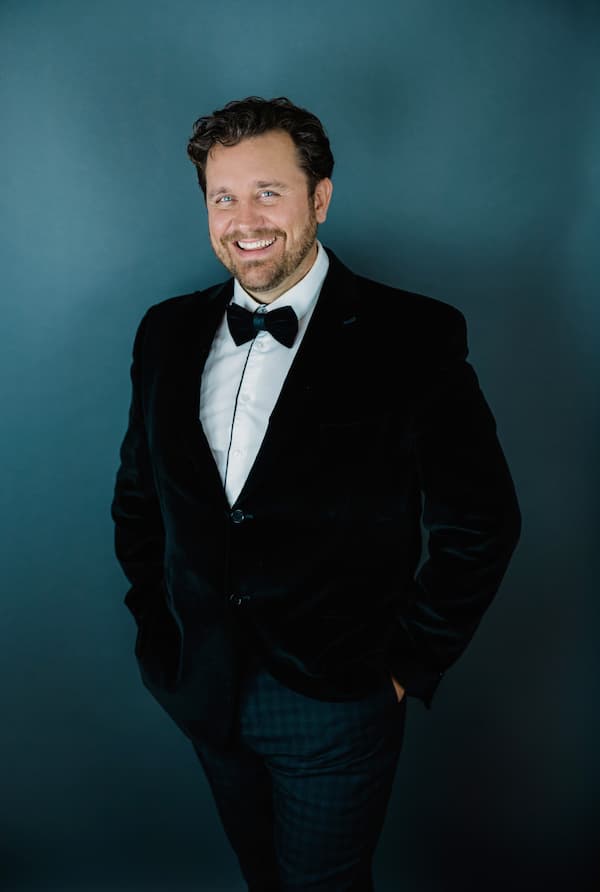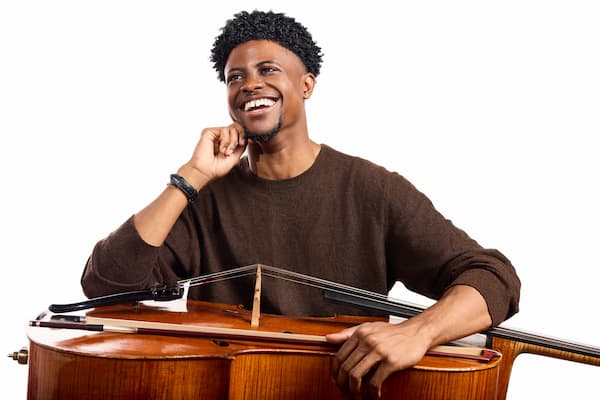‘Music Was Meant to Be’
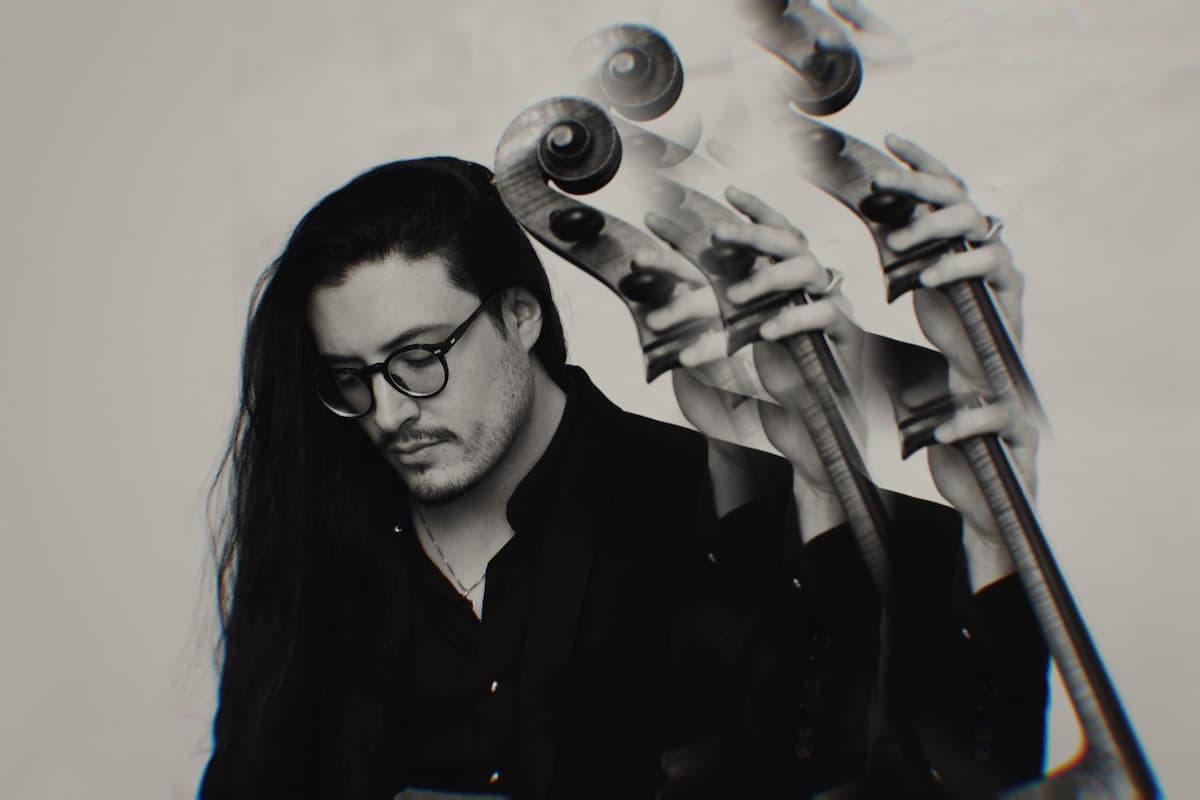
Santiago Cañón-Valencia © santiagocanonvalencia.com
Few cellists can lay claim to the breadth and inventiveness of a career such as Santiago Cañón-Valencia. A self-confessed ‘soloist, composer, commissioner, recording artist, painter and photographer’, his prominence on the traditional concert platform, appearing with groups such as the BBC Symphony Orchestra, Frankfurt Radio Orchestra, Danish Chamber Orchestra, Alabama Symphony and Mariinsky Orchestra, runs in parallel with his work as a boundary-pushing composer and instrumentalist.
G. Crumb: Sonata for Solo Cello, Santiago Cañón-Valencia
Santiago is passionate about music both old and new, having commissioned several new works for the cello in addition to writing his own pieces. His latest album Ascenso from 2022 features several of these works, along with Santiago’s own work Ascenso Hacia lo Profundo [Ascent to the Deep]. Scooping awards and prizes from the Tchaikovsky Competition (Silver Medal and Audience Favourite) to the Beijing International Competition (First Prize), Santiago has already established a track record as one of the most exciting young soloists of his generation.
Santiago, originally from Colombia but now based in Vienna, tells me about his eclectic musical tastes, his compositional process, and how he was immersed into music and art from an early age.
How did you find your way to the cello? Was your family musical?
My family are all musicians. My dad played in the Bogotá Philharmonic in Colombia, my mom used to play the cello, and my sister plays the violin, so when I was born I was surrounded by music all the time. If it wasn’t my family practising then someone was listening to music in the house or we’d be going to concerts to see my dad’s orchestra – music was definitely meant to be!
I started with the cello when I was four and a half – I actually wanted to start with the bassoon, but I don’t think it’s possible for a four-year-old to play the bassoon, so my mom suggested the cello, and as soon as I had it in my hands, it felt right.
What was the music you and your family were listening to while you were growing up?
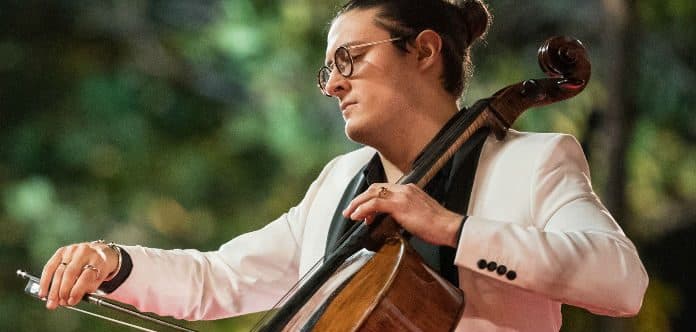
© theviolinchannel.com
It was pretty varied. Everyone would just listen to music in the mornings while making breakfast or something – a lot of the time it would be classical, but also, we listened to Colombian folk music.
My dad’s really into jazz, so he would also play quite a bit of jazz around the house. Then, I started developing my own musical taste, so I listened to a lot of music in my own time. It was mostly classical, but not just classical, which I think is a good thing.
Now, in my free time, I barely listen to any classical music. I prefer to maybe go to a concert, rather than put something on to listen to. If I’m listening to music, it’ll be almost never classical music.
What is it you would listen to?
I’ve always had an affinity for metal and rock, that side of things. But now my taste has become very varied. I listen to anything from death metal to hip hop, it’s a very wide spectrum. I like collecting vinyl now – I have a few classical records but most of the library is not classical.
Did you have a moment where you decided to fully commit to the cello, or did it happen more gradually?
I think I did have a specific moment, though it was when I was really young, so it’s kind of funny to think about that now because I believe at the time I wasn’t mature enough to be conscious of what was happening.
When I was six years old I played with a professional orchestra, and I just remember the feeling of being on stage and making music with so many other people around me, not just by myself at home or with a pianist.
That feeling of playing in a big hall with lots of people was really special. It had an impact on me, and I like to believe that was the decisive point even though it was pretty early and I maybe didn’t realise that at the time.
You paint alongside your work as a musician. Is that a recent thing or has it always been part of your identity as a musical artist?
That was actually like the journey with music for me because two of my uncles are professional painters. One of my grandfathers was also a professional painter, so I grew up around lots of art.
When I was young, every Christmas at my mom’s family house, I would see my uncles and my grandfather paint in their studio.
That was something that really caught my attention when I was young. I started also developing a taste for going to museums and looking at art when I was really young, just like going to a concert or something, and art was always kind of my ‘fun’ thing to do, after practising.
After lessons with my first teacher in Colombia, when I was a kid, there would be this twenty minutes or half an hour of time where my teacher would be talking to my mom about the lesson, all those things, and I would tune out – I was handed paper and colours and stuff and I would go at it.
So it was always something that was encouraged, which I’m glad for. It wasn’t just cello cello cello.
It’s been more recently that I’ve started being more public about the painting. I’m going to have my first exhibition in December here in Vienna, so now it’s turning a little bit into something more serious, which I am happy about.
I think it is very easy, especially with classical music, to get a little bit of tunnel vision and forget that anything else exists, so it’s important to not fall into that.
How have those experiences fed into your life as a musician?
I think it helped in a way. I wouldn’t be able to say exactly how, but definitely improvisation has never been something that makes me freeze up, which I think maybe arrived from that. I think it also has to do with the fact that I’m always listening to other types of music as well, not just classical. I always have something different in my ears, in my head.
Tell us about your composition work.
The composing is also a fairly recent thing. I always had this feeling that as classical musicians, we’re mostly interpreters, really. There’s always this feeling of balancing playing other people’s music while also making it your own; this is great, and a skill we need to have, but I always wanted to know how it felt to play your own music.
Again, this comes from listening to other kinds of music, going to different concerts, not just classical concerts. I always find it so rewarding going to see a band I really love where they play all their own material and everyone just absolutely loves it. They’re playing things that they came up with, so I wanted to try my hand at that.
The first piece I wrote was only in 2021 so it’s a recent thing, but one that I’m very much enjoying.
In a concert, does it feel different when you reach the point where you play your own music, rather than someone else’s?
Yes, at least for me it does. It’s a great feeling, and especially if you have a good response from the audience, it’s even better. I really like it, so I’m doing more things and will hopefully have more to share at some point.
Do you think you will one day write for others too, not just for yourself?
I find that hard because so much of what I write is based on what I know, what I like to do, what I can do myself, so for now it’s very ‘me-focused’, but who knows down the line.
Tell us about your first solo piece, Ascenso Hacia lo Profundo.
I pushed myself to write it. It came out of me wanting to put a piece of my own in the last album I released, which was all solo cello, and mostly contemporary Colombian composers. I said to myself, ‘Ok, this is the programme, and I’m going to do a piece of my own at the end.’
For me, I’m the type of person who works better when they have an actual deadline. If I just go ‘Oh, I want to write a piece,’ and sit down, I’ll never finish it. It came from that, and the way it was written I find kind of interesting – it was never really written on paper until after it was already done.
I always improvise a bit in my practice, and when I come across something I really like, even if it’s just three seconds, I’ll pull out my phone and record it as a voice memo. Then I end up with this huge library of five- to ten-second little bits of cello playing.
I wrote the piece like a kind of puzzle: pairing things together, seeing what fits and what doesn’t. I ended up with these big chunks and then I kind of transformed those into something that makes sense musically, and I found that a very cool experience, very rewarding.
A lot of Ascenso Hacia lo Profundo is completely inspired by really non-classical material, two songs in particular: one by a band, Meshuggah, a metal band, and the other one by an indie-rock band called Sun Kil Moon. Nothing to do with classical music, which is always fun.
S. Cañón-Valencia: “Ascenso Hacia lo Profundo”
All your recordings have a clear idea or theme behind them. Do you have any plans for the next one?
I don’t have anything specific coming up but I do always believe in an album having a clear concept or identity. I am generally not really a fan of when an album is put out and it’s just a ‘greatest hits’ or whatever, just to get people to listen to it. I think it’s nice to have a balance.
There are no plans of anything coming up at the moment, but I enjoy the process of recording a lot, and hopefully, it won’t be too long before I release something else, so let’s see.
When planning a recording, does the theme for the album come first, or does it emerge alongside wanting to record certain pieces?
I think it comes from a single piece that I want to record or a couple that fit together, and then you find a common theme: something to tie them together into a thing that makes sense to listen to, a programme that flows nicely and that’s not completely random.
What do you do in your spare time?
Painting is something I do quite heavily in my free time. I also really like reading, I like going out for a coffee and reading in a coffee shop. I’m also really into photography and I do that a lot. It’s also easier to do it than painting when you’re travelling; you just pack your camera and it’s more in-the-moment, a little quicker of a process, less cumbersome than travelling with paints and easels or whatever.
I also love going to museums. Whenever I go somewhere I have to go to a museum.
For more of the best in classical music, sign up for our E-Newsletter


